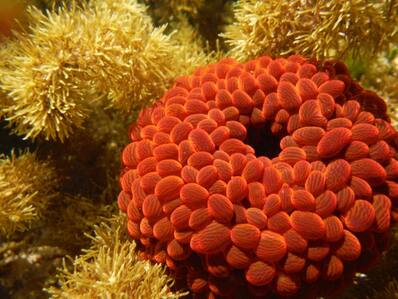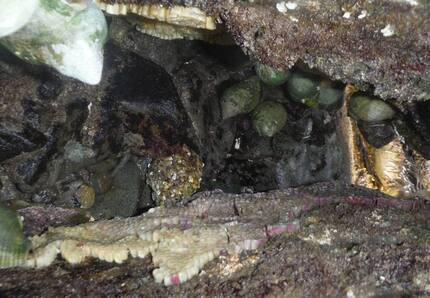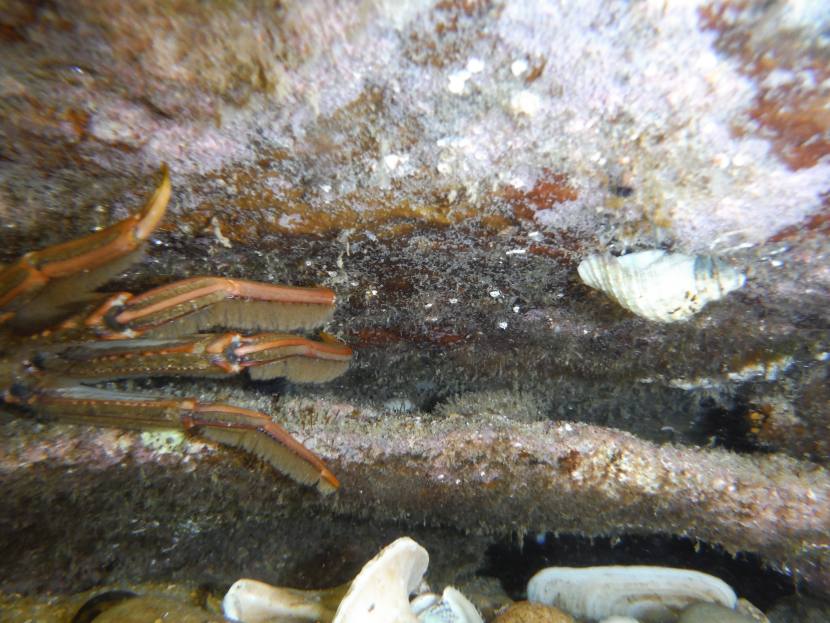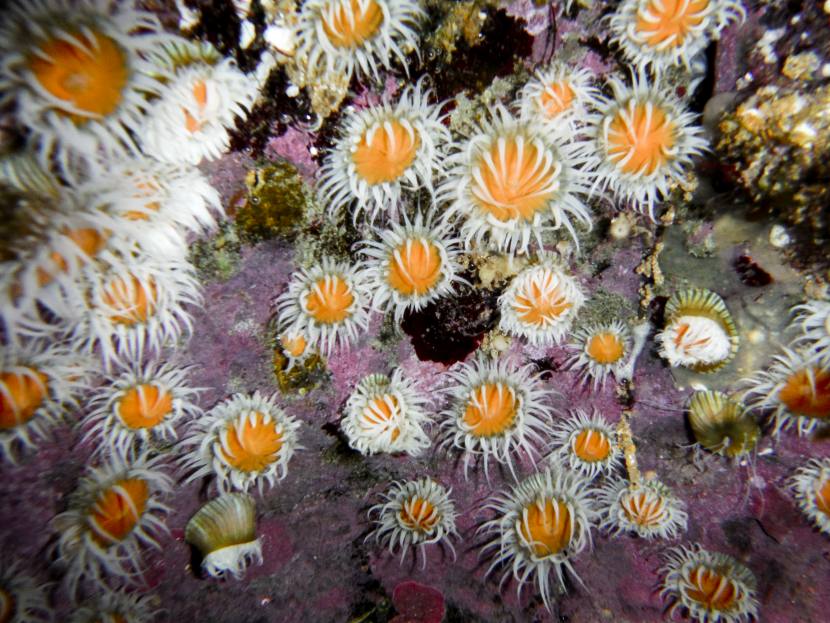 When you dip a camera into a rock pool and fire it off, sight unseen,
When you dip a camera into a rock pool and fire it off, sight unseen, you can end up with 100 photos of brown slime. But every now
and then there is one like this, a wandering sea anemone.
WE HUMANS thought we were hard done by in last week's big storm. Spare a thought for the little fellas who live practically on our doorstep in much more precarious situations and endure ten, a hundred or a thousand times the danger and discomfort twice every single day of their existence.
The selfie stick is a vanity; an indulgence. But combined with a waterproof camera it becomes a tool for observing the habitat of those determined little survivors – the living creatures and plants that inhabit the intertidal zone.
| It's a bizarre way to take photographs; I literally have no idea what's on the camera until I see the pictures on screen. Some days there are 50 pictures of brown slime. On others a 100 out-of-focus kaleidoscope images. Then there are the gems – the ones that take my breath away with their colours, beauty or unexpected content. Did you know that the Red Rock Crab has long silky hair hanging from its limbs? The Yellow and White Striped anemone, Anthothoe albocincta, when closed, is as plain and insignificant as any dollop of pale brown slime; open and feeding, they are glorious little daubs of brilliant colour. Anemones feed either at high tide or when submerged. These little guys live under rock ledges, not too far out but generally hidden. |
In Paws Galore op shop I found some sturdy skateboarding knee protectors because the barnacles can leave an awful mess on skin. Footwear depends on time of year; old jogging shoes with a grippy sole; Reef Walkers, pricey surfers boots and my favourite Woni footwear – the designer gumboot.
I'm always very aware of the exact moment the tide turns. The old saying, “Never turn your back on the sea”, is essential practice. In reality, there are very, very few hours in the year that can be spent safely photographing what lies below the surface of our rocky reef. My decision a few years ago was to go for quantity over known quality; maximise the number of shots by setting the camera to fully automatic and weed out the disasters on the computer; the unfocused and the black and brown slime. I guess that for every hundred rockpool photos I take, one or two will be a keeper. One in five hundred is “WOW!”
 Dog whelk laying eggs
Dog whelk laying eggs As our land seasons turn and change, so do the seasons of the sea. April and May is the breeding season of the sea hares. They inhabit the extremely shallow rock platforms populated by ascidians and with hiding crevices. A photo taken from above shows a very unattractive lump of greenish matter. If I can submerge the camera – they are beautiful, delicate creatures with frills and vents.
The first Wandering anemone I found was dead and decomposing on Wreck Beach. It looked like rotting eggs although I could not identify the species. Then I found another, off the steps at Harmers Haven, slightly less rotten but still unidentifiable. At last, a living creature – vibrant and healthy not far off the Olearia Street carpark. This was a red letter day!
In none of these photographs has the true colour of the reef been altered or enhanced. A shout out to my friend and co-observers Sue and Michael Canders, who love our little section of the Great Southern Reef as much as I do.

